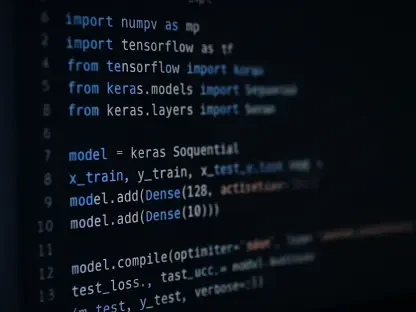In the ever-evolving landscape of software development, the release of C# 14 promises to bring innovative features that will enhance the language’s capabilities significantly. Our expert, Anand Naidu, who is proficient in both frontend and backend development, is here to delve into these upcoming updates. With his extensive knowledge in various coding languages, Anand sheds light on the exciting new features of C# 14 and their implications for developers.
What is C# 14, and when is it expected to be released?
C# 14 is an upcoming update to Microsoft’s versatile, general-purpose programming language, known for being cross-platform. The aim is to further extend its functionality and usability. The general release of C# 14 is planned alongside .NET 10, which is expected to roll out in November 2025.
Can you explain what extension members are in C# 14? How do they differ from existing extension methods, and what advantages do they offer to developers?
Extension members in C# 14 are an evolution from the well-established extension methods. While extension methods allow adding methods to existing types without modifying the type, extension members expand this concept by allowing developers to also add properties. This means functionalities can now be encapsulated more naturally. The main advantage is the ability to enhance types for which the source code isn’t accessible, thus promoting more versatile and cleaner code structures.
What new features related to extension members have been added in .NET 10 Preview 3? What are static extension methods and instance and static extension properties?
The .NET 10 Preview 3 introduces static extension methods and both instance and static extension properties. Static extension methods enable the addition of static methods to types, while instance and static extension properties allow developers to incorporate properties that function similarly to the existing ones on a type without altering its original structure. This grants developers more ways to augment functionality.
How does the new optional alternative syntax for extension methods work? Is it mandatory for developers to switch to this new syntax?
The optional alternative syntax for extension methods provides a different way of declaring these methods. The key aspect is its optionality; developers are not required to adopt this new syntax immediately. They can continue using their current extension methods as this new approach is designed to be fully compatible and interchangeable with the existing syntax.
How do extension members add functionality to types when developers do not have access to the type’s source code?
Extension members enable developers to ‘extend’ a type by adding new methods or properties without altering the original type code. This is particularly beneficial for adding functionalities to third-party types or interfaces, ensuring the extension of capabilities beyond the immediate source code boundaries.
What challenges did developers face while creating the extension members feature? What were some issues with previous designs or syntax proposals?
Developers encountered several hurdles, primarily surrounding complexity and compatibility. Some early designs required repetitive syntax for each member, while others posed challenges in terms of distinguishing or organizing extensions. Additionally, some proposed implementations risked breaking changes, prompting the need for a syntax that felt inherently aligned with C# while retaining backward compatibility.
How does the new extension member syntax ensure compatibility with existing extension methods?
The new syntax is crafted to coexist seamlessly with the established ‘this-parameter’ approach, maintaining a consistent experience while paving the way for additional functionalities. It respects the existing ecosystem by being fully interchangeable, thus preventing any disruption to current codebases.
Why might developers prefer using the new extension member properties rather than traditional methods like !list.Any()?
Developers might find extension member properties more intuitive and expressive compared to traditional methods. For example, replacing !list.Any() with a property like IsEmpty() often makes code cleaner and more readable, encapsulating the logic into a methodologically sound property instead of a direct method call.
What were some of the explored designs and challenges that impacted extension members’ development according to discussions you’ve encountered?
Throughout the development, various designs came into play, each with their own complexities. Some designs introduced constraints that complicated implementation or did not fit naturally with C#’s language philosophy. Discussions focused on ensuring extensibility without compromising C#’s signature simplicity and structure.
How does the introduction of extension member syntax align with the design philosophy of C#?
The design philosophy of C# has always emphasized clarity and robust functionality, and extension member syntax aligns with these principles by offering a more natural and integrated way to enhance types. It respects the language’s legacy while introducing a simplified path for growth and innovation.
Do you have any advice for our readers?
Embrace these new features gradually and understand how they can enhance your projects. Staying informed and experimenting within controlled environments is key to leveraging the full potential of C# 14 and ensuring your development practices remain efficient and forward-thinking.









